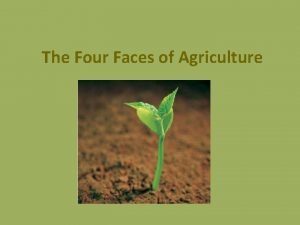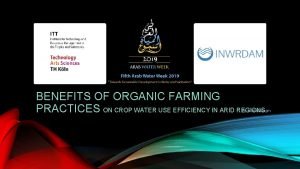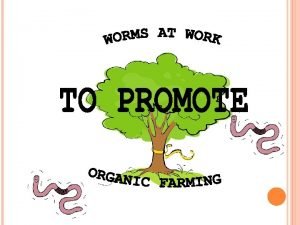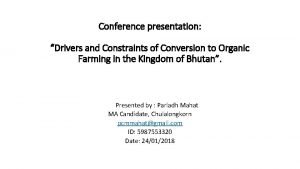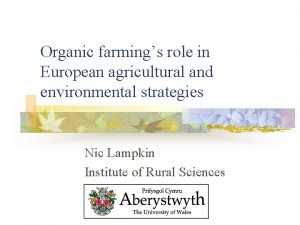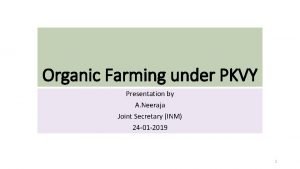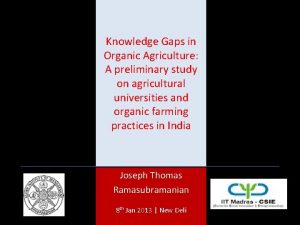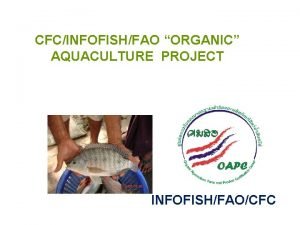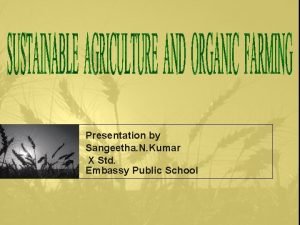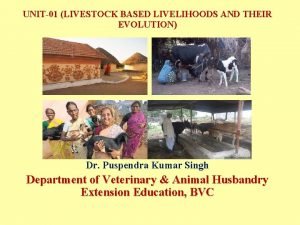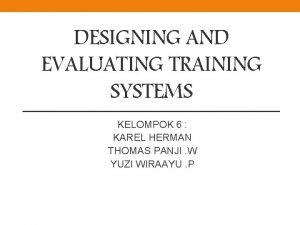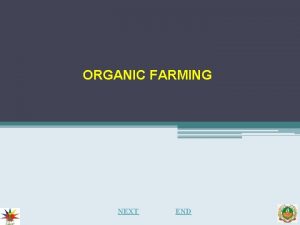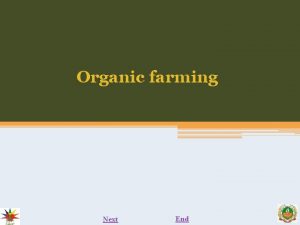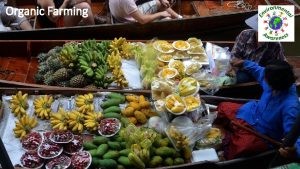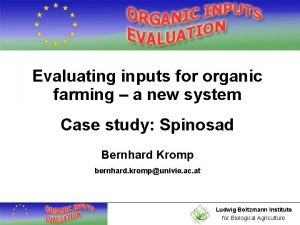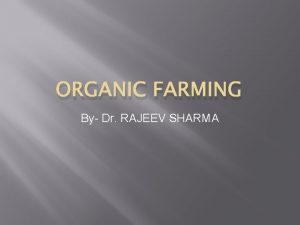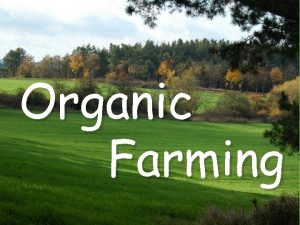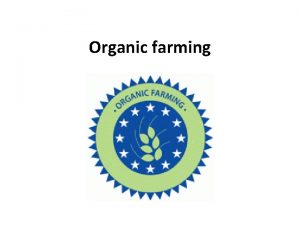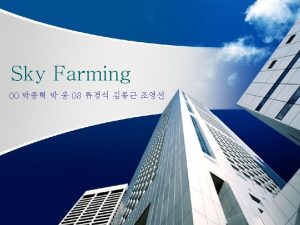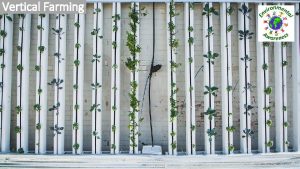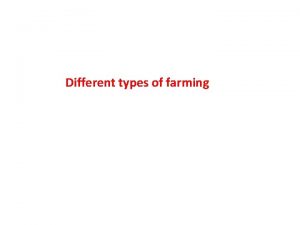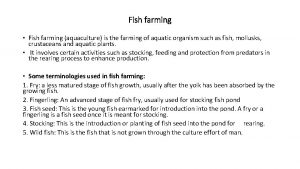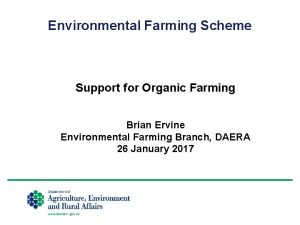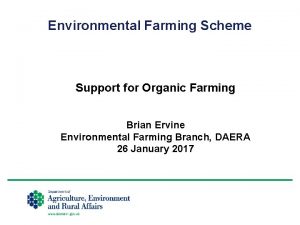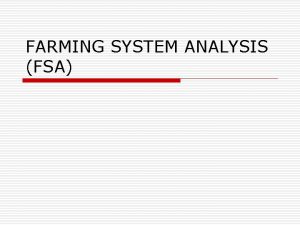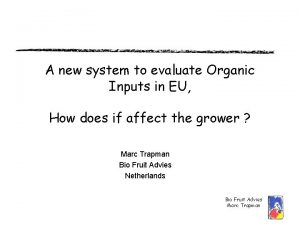Evaluating inputs for organic farming a new system

















- Slides: 17

Evaluating inputs for organic farming – a new system Case study: Hydrolysed proteins Chris Koopmans c. koopmans@louisbolk. nl 13 October 2005

Overview • • • Objective and method Hydrolysed protein matrix Key issues evaluators Discussion of key issues Conclusions

Objective and Method Objective: – Find out whether the matrix works – Provide an example for real applicants Method: – One applicant representing a member state – 3 experts representing the expert panel Only first phase of an evaluation process!

Matrix: Application form • Name: Hydrolysed proteins of animal origin • Composition: Amino acids, peptides, polypeptides, denaturated proteins. • Nutrients: Hy. Pro contain 5 - 10 % N (mainly as organic N). In addition, they contain 2 - 8 % Ca. • Quality: The composition of Hy. Pro as a category varies widely with different materials of origin and with different hydrolysis processes. • Form: Fluid or solid. • Use: Fertiliser, biostimulants and complexing agents.

Matrix: Application form • Approval in EU: At present hydrolysed proteins are approved for use in conventional agriculture in Italy (according to the Law 1984/748) and Spain. • Crops: Horticulture (vegetables & fruit trees), winter cereals. • Application method: – to the soil, by fertigation, when utilised for their fertilising properties; – to plants, by spray application, when utilised for their biostimulating or complexing properties. • Dosage and application rate (empirical figures from Italy): – Fertigation, horticulture: 2 - 12 kg N/ha/cropping cycle; – Fertigation, fruit trees: 5 - 20 kg N/ha/year; – Spray application: 0, 5 - 1 kg N/ha/application.

Matrix: Application form Key issues in favour • • Precedents with similar raw materials. Recycling of waste material. Traditional use in Italy and Spain. Necessary for some crops. Key issues causing concern • Origin of parts of the animals from factory farming cannot be excluded. • Not all manufacturing methods equally compliant

Key issues evaluators Key issues in favour • Alternatives and necessity Key issues causing concern • • Factory farming: origin of material Manufacturing Effect of impurities: Cr residues Public perception

E 4. 02 -3 Alternatives Applicant Evaluator Score

E 2. 01 Origin of materials Applicant Evaluator Score

E 2. 03 Factory farming origin Applicant Evaluator Score

E 3. 01 Manufacturing methods Applicant Evaluator Score

E 5. 03 Effects of impurities Applicant Evaluator Score

E 8. 01 Public perception Consumption-related views. Applicant Evaluator Score

E 8. 02 Public perception Farming practice-related views Applicant Evaluator Score

E 11. 04 Proposed restrictions • Need recognized by the inspection body or inspection authority; • Not from chemical hydrolysis; • Not from wastes collected post-tanning (this restriction was only supported by some experts).

Conclusions • The completed matrix gives an adequate and quick picture of key issues associated with the product. • The matrix reflects opinions of the evaluators. • Controversial issues have been identified and restrictions on manufacturing and origin of materials have been proposed. • The next step would be to evaluate the product according to the restrictions proposed.

Question to the audience • Were the critical issues identified and evaluated effectively, bearing in mind the multiple origins, manufacturing methods and uses?
 Organic farming pros and cons
Organic farming pros and cons Organic farming
Organic farming Conclusion of organic farming
Conclusion of organic farming Reference of organic farming
Reference of organic farming Objectives of organic farming
Objectives of organic farming Organic farming
Organic farming Challenges of organic farming
Challenges of organic farming Organic tilapia farming
Organic tilapia farming Advantages of organic farming
Advantages of organic farming Principles of organic farming
Principles of organic farming New england subsistence farming
New england subsistence farming Input and output design
Input and output design Importance of farming system
Importance of farming system Designing and evaluating training system
Designing and evaluating training system Formuö
Formuö Typiska drag för en novell
Typiska drag för en novell Nationell inriktning för artificiell intelligens
Nationell inriktning för artificiell intelligens Ekologiskt fotavtryck
Ekologiskt fotavtryck
